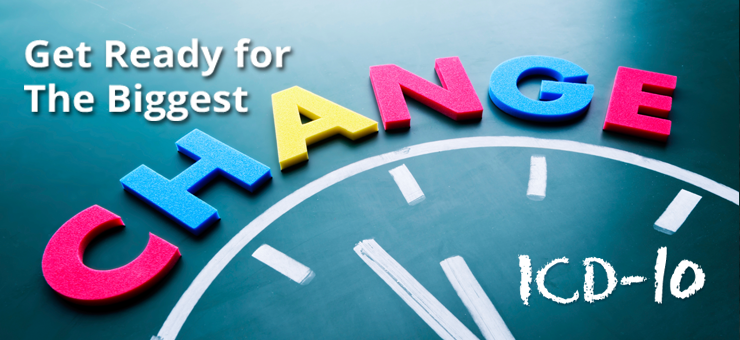On October 1, 2014, one of the biggest changes to ever hit the healthcare industry will take effect, when the old system of diagnostic coding, ICD-9 will be replaced by ICD-10.With the new coding system, the number of diagnostic codes will jump from the current 14,000 to 68,000, a fivefold increase.
ICD-10 will enable physicians to track and monitor diseases more effectively, code more accurately, keep up with the rapidly changing technology and take advantage of new payment models while managing quality.
However, as is the case with any change, the adoption of ICD-10 will present certain challenges, not the least of which will be the cost associated with switching to ICD-10.
The switch to ICD-10 will be expensive. Research suggests that the move to ICD-10 will cost up to $1.5 billion in the next 10 years, but savings resulting from the change are expected to eventually exceed $7.5 billion. On average, a mid-size practice may have to spend nearly $300,000 in ICD-10 costs, while for a large practice, the cost may go up to $3 million.
Even though there are still ten months before ICD-10 takes effect, practices should already be prepared for the upcoming change. Practice managers should understand exactly how the practice and the payers will use these codes and what would it take to be ready for this change.
Answering the following question can help a practice manager assess their current state of ICD-10 readiness:
- How ready is your EHR vendor?
- Who do you share diagnosis information with?
- Will your provider have a specific ICD-10 workflow?
- Is your vender providing a convenient way to use ICD9 to 10 cross walks?
- Is there a training plan for support staff?
- Will you need to generate reporting updates for quality programs?
- Will your medical billers need to re-certify?
- Which ICD-9 claim codes are changing in ICD-10?
- What coding errors can you expect?
A smooth transition to ICD-10 will require that all of your health IT vendors work in unison with you and with everyone responsible for medical coding in your organization, to incorporate the changes.
You need to know the details of your vendor contracts, their plans and timelines. They should be able to tell you how ICD-9 and ICD-10 will work simultaneously. Also, ask them what the implementation process includes, and if needed, the kind of training they will provide. You also need to check if you will require any additional infrastructure and software.
In addition, you should know which of your vendors will be affected by ICD-10, and whether or not the existing interfaces require upgrades. Find out if there are any vendor fees associated with the shift to ICD-10, and in the case that you need to migrate some data, will your vendor help you with the migration? A good suggestion is to put the new system in action, before the October 1, 2014 deadline. Check with your billing vendor to see if you can run test claims before the cutoff date, or if you can shift to the new system in advance.
The transition to ICD-10 can be smooth if you have a vendor who understands the new system, has good relationships with payers and is committed to helping you make the switch successfully.

Join the Discussion!